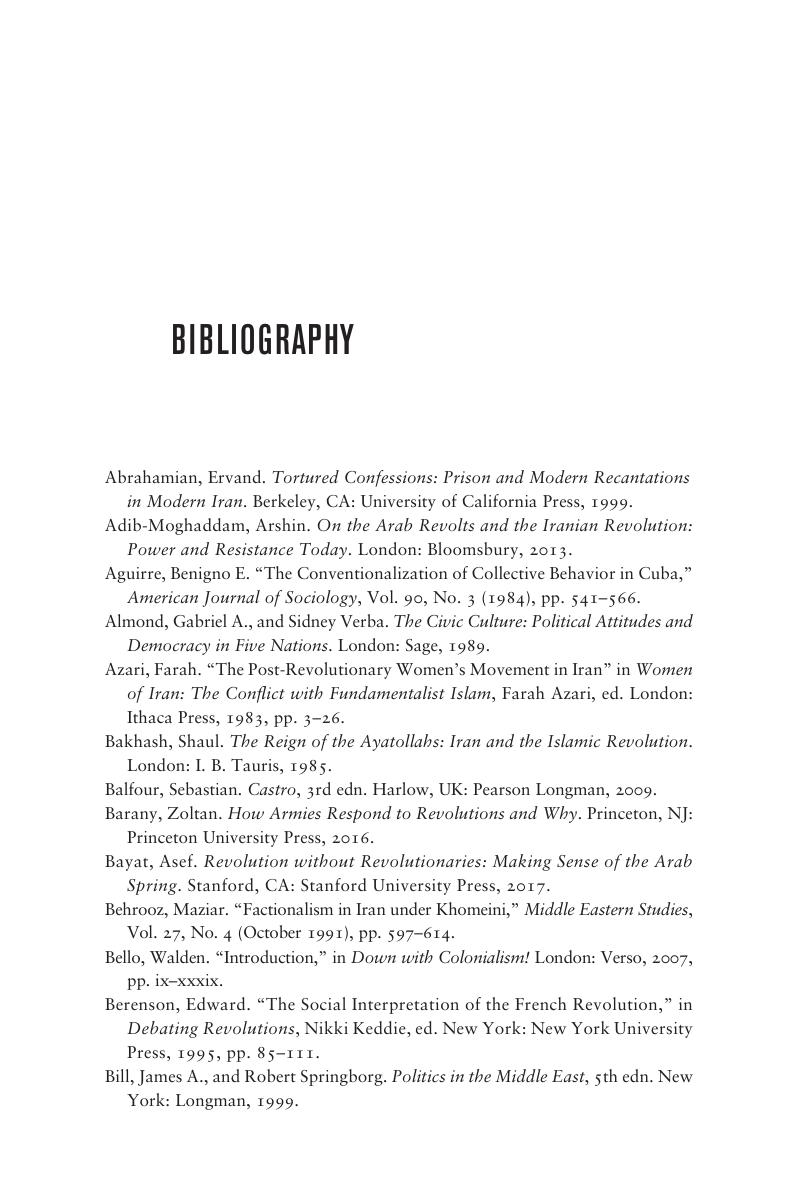Book contents
- A Concise History of Revolution
- A Concise History of Revolution
- Copyright page
- Contents
- Acknowledgments
- 1 Introduction
- 2 From Rebellion to Revolution
- 3 From Social Movement to Revolution
- 4 Revolutionary States
- 5 Revolutionary Polities
- 6 Conclusion
- Chronology of Revolutions
- Notes
- Bibliography
- Index
- References
Bibliography
Published online by Cambridge University Press: 26 September 2019
- A Concise History of Revolution
- A Concise History of Revolution
- Copyright page
- Contents
- Acknowledgments
- 1 Introduction
- 2 From Rebellion to Revolution
- 3 From Social Movement to Revolution
- 4 Revolutionary States
- 5 Revolutionary Polities
- 6 Conclusion
- Chronology of Revolutions
- Notes
- Bibliography
- Index
- References
Summary

- Type
- Chapter
- Information
- A Concise History of Revolution , pp. 176 - 184Publisher: Cambridge University PressPrint publication year: 2019

